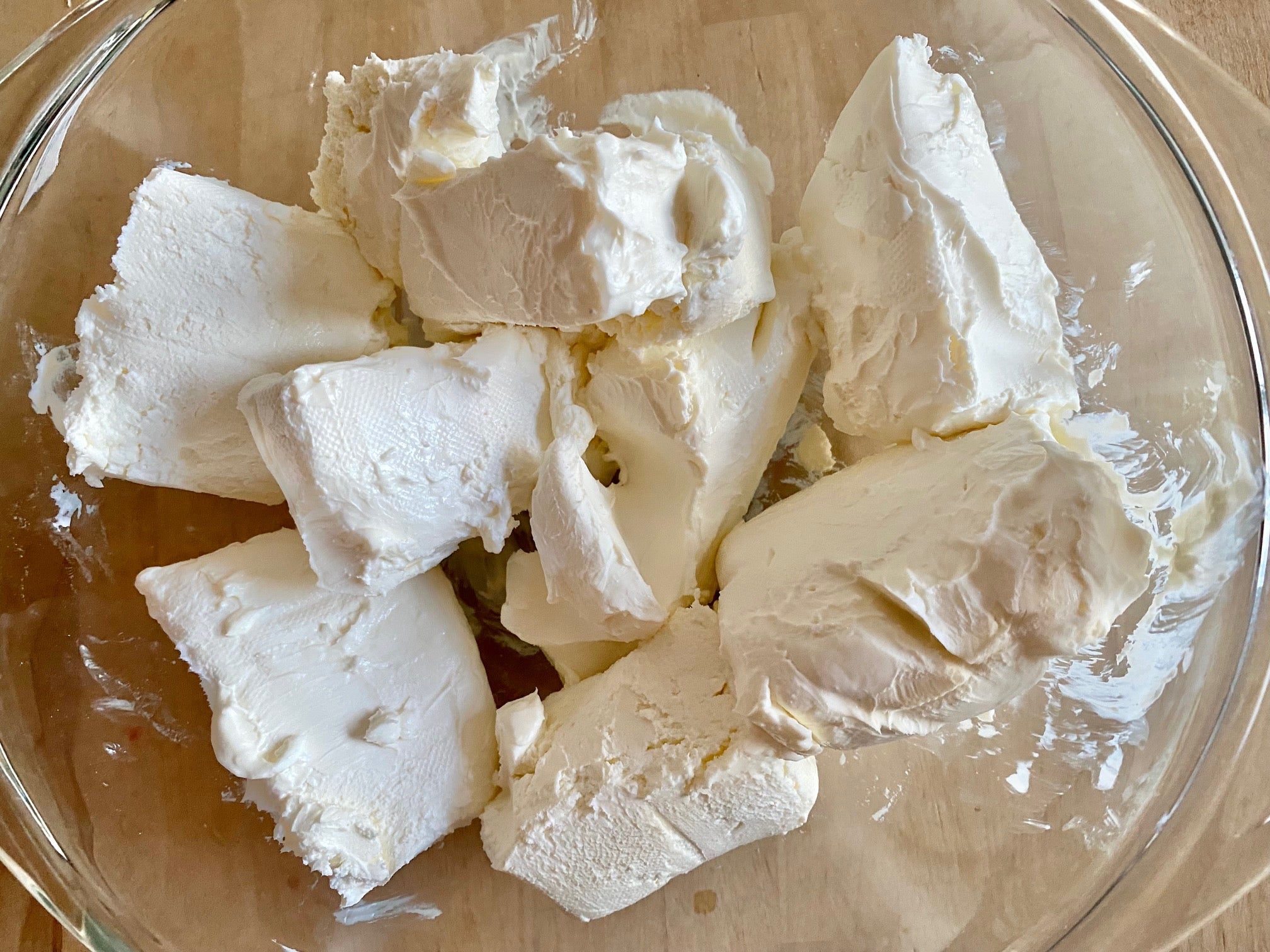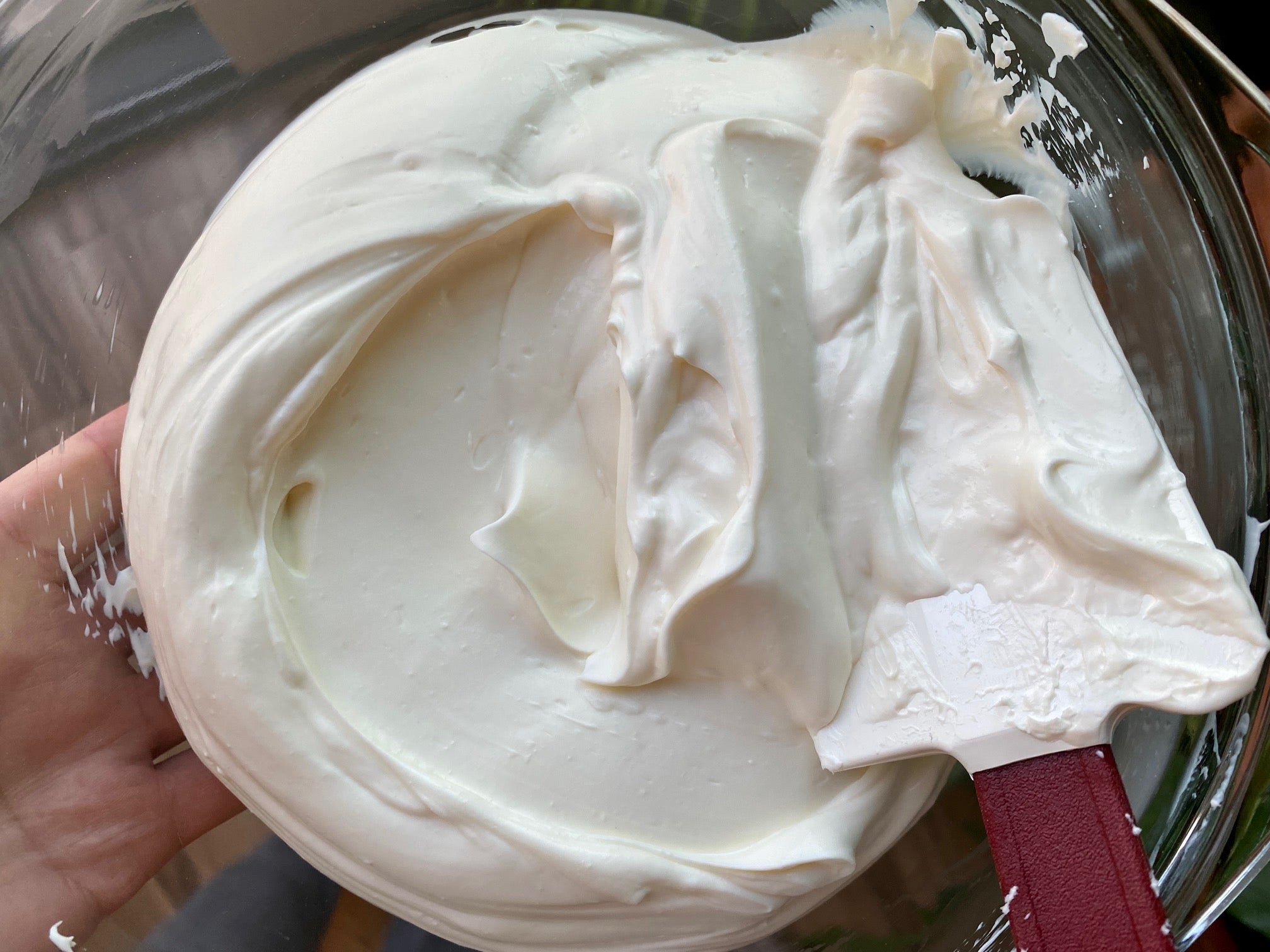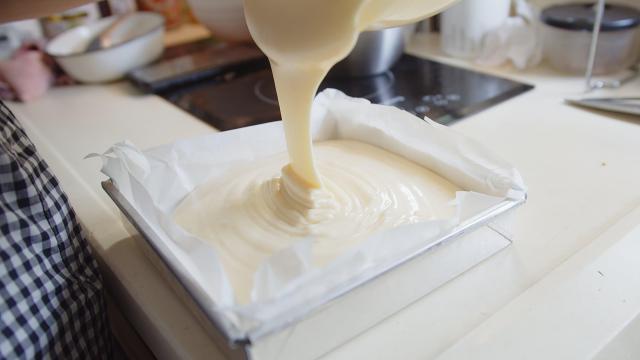Besides the water bath, the notorious cracking, a long bake time, and an unimaginably long cooling time, cheesecake has only one bother: chunks of unblended cream cheese. Cakes and quick breads that are made with flour are often OK if there are small lumps of unblended ingredients — it usually shakes out in the oven. Cheesecake is different, though. Everything must be blended perfectly. And it turns out, us baking professionals have been wrong all this time in telling you how to avoid them.
By and large, the classic technique for making a smooth cheesecake has been to start with room temperature cream cheese (which could be as low as 12°C or 15°C), use an electric mixer, scrape the sides of the bowl five thousand times, and add the liquid ingredients bit by bit — all in the name of preventing lumps. But the much faster, less entirely irritating way to make a silky cheesecake filling starts with melted — and warm — ingredients.
Cheesecakes are made of cream cheese, eggs, liquids or semi-liquids, and sugar. Your desired temperature for all these ingredients (except for dry ingredients, and anything amounting to a teaspoon or less) is warmer than room temperature: between 30°C-55°C. Your ingredients will blend best if they’re all around the same warm temperature, and this can be done much faster than waiting hours for your cream cheese to sit out on the counter.

Chop the amount of cream cheese needed for your recipe into large chunks and place them in a large microwave-safe bowl. Microwave it for two or three minutes, stopping every 30 seconds to stir. After a minute or so, you’ll see the cream cheese start to loosen up. By the end of it, the bottom of the bowl should be noticeably warm, and the texture of the cream cheese should be fluffy and soft, kind of how it looks when you smear cream cheese on a too-hot bagel and it squirts out the back. Stir the cheese until all of the lumps are gone, and it looks lovely and smooth. If you find any firm lumps in there, throw it in for another 20 seconds or so.

You can heat up any liquids, or sour cream, the same way by popping it in the microwave and stirring every 20-30 seconds until it feels warm to your touch. The ideal temperature is 30°C-55°C, so nothing should feel super hot. If you’re unsure, use a thermometer to check. Anything over 60°C is going to start cooking your eggs, which is a whole different lump that we don’t want. To warm up your eggs, simply stick the whole egg (in its shell) in a cup of hot water for about 10 minutes, changing out the water if it cools down from the egg’s chill. The hot water will gently bring up the egg’s temperature.
Once your ingredients are sufficiently warm and melty, blend them together according to the recipe’s directions. Using this method, you don’t even need an electric mixer; it can all be done by hand with a whisk. Not only will the ingredients come together without a fight, you might not need to scrape the bowl at all, which makes for a mixing experience that takes half the time of the traditional method. Pour the filling into your prepared pan and spend that gained time fussing over the water bath (or be a boss and just chuck it in the air fryer).

Leave a Reply
You must be logged in to post a comment.